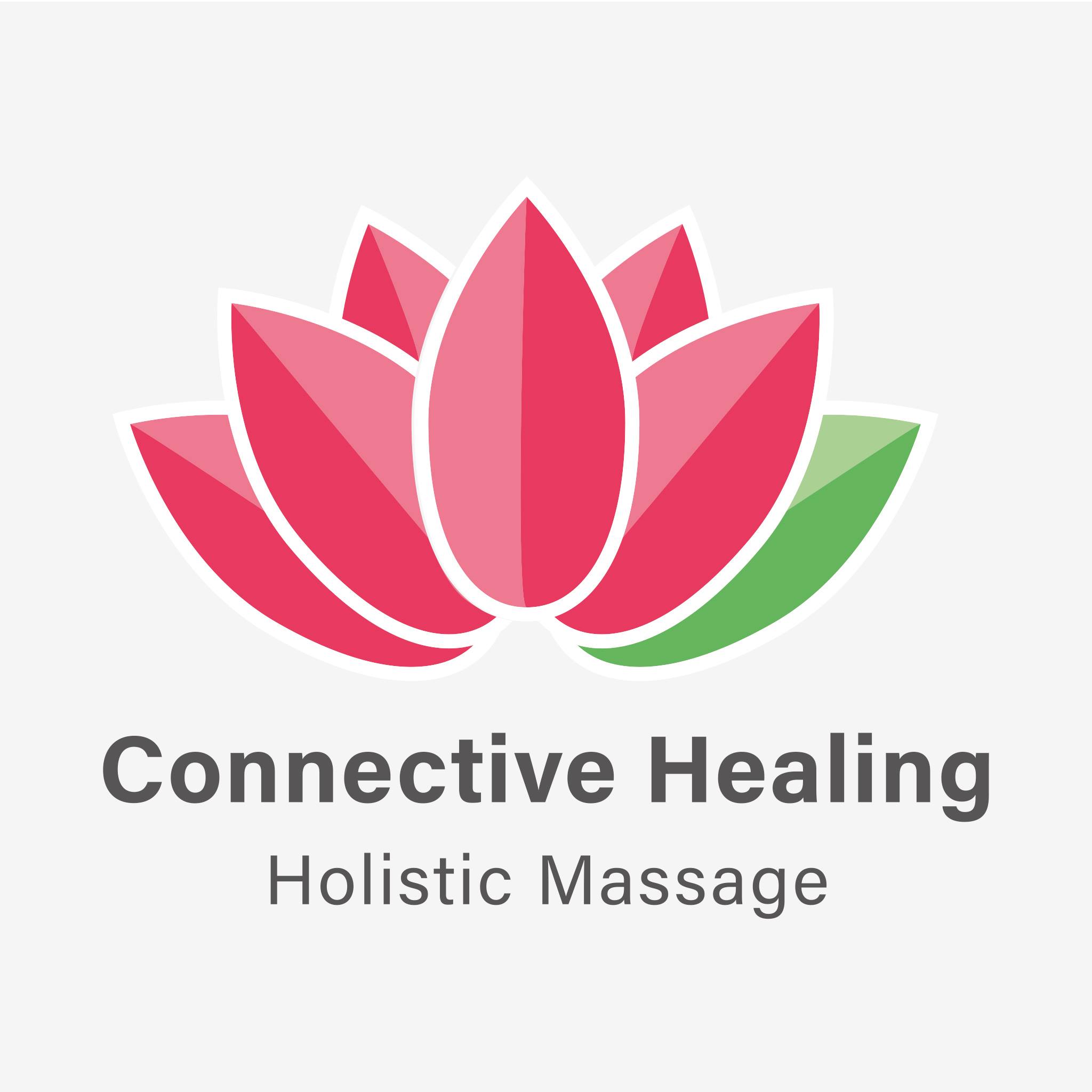Pregnancy Massage
A gentle treatment to help you relax and improve your sense of well-being.Pregnancy Massage
Pregnancy Massage involves the manipulation of the body’s soft tissue (i.e. the skin, muscles, tendons, ligaments and facia) using the hands in a gentle, flowing massage technique. There are basic massage techniques which make up the treatment, they are effleurage, petrissage, frictions, vibrations.
The techniques use varying degrees of pressure and stretching movements. It is a very gentle form of massage and it is most commonly used for easing muscular tension and stress as well as relaxation and improving health and well-being during pregnancy.
A treatment has the capacity to improve circulation, increase oxygen, and relax the client. This boosts the self-healing mechanisms of the body.
The massage can only be done after the first trimester of pregnancy and not before.
What happens during a Pregnancy Massage?
Step 1 – Arrival & Consultation
A typical body massage session lasts for about one hour, treating specific areas such as backs, shoulders, lower back, legs and necks or any areas giving discomfort, aches or pains.
The environment is important to the massage. The room will be warm and peaceful with careful consideration given to the lighting, soft music and essential oils diffused to add to the experience.
On the first visit clients complete a consultation, where they are asked a number of questions concerning general well-being, injuries and medical conditions that the therapist should know about, in order to determine if there are any contra-indications (physical conditions that would prohibit or limit a massage treatment).
The client is asked to undress ensuring their modesty is protected, at which point the therapist will leave the room and the client will be asked to lie on the treatment couch under a large towel. During the session, the therapist will use the towel to expose only those parts of the body to which treatment is being applied. No body part or area will be massaged without the client’s permission.
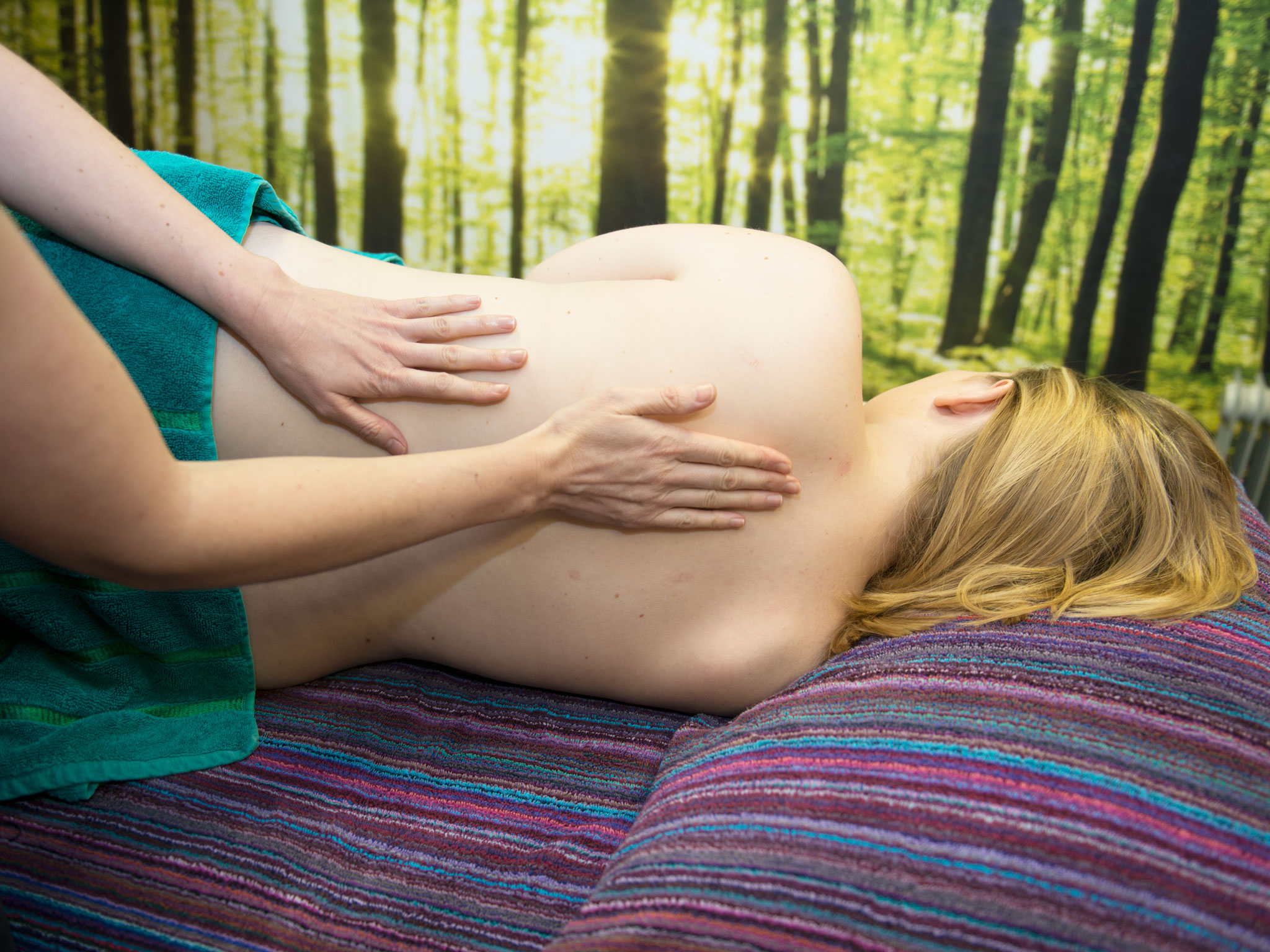
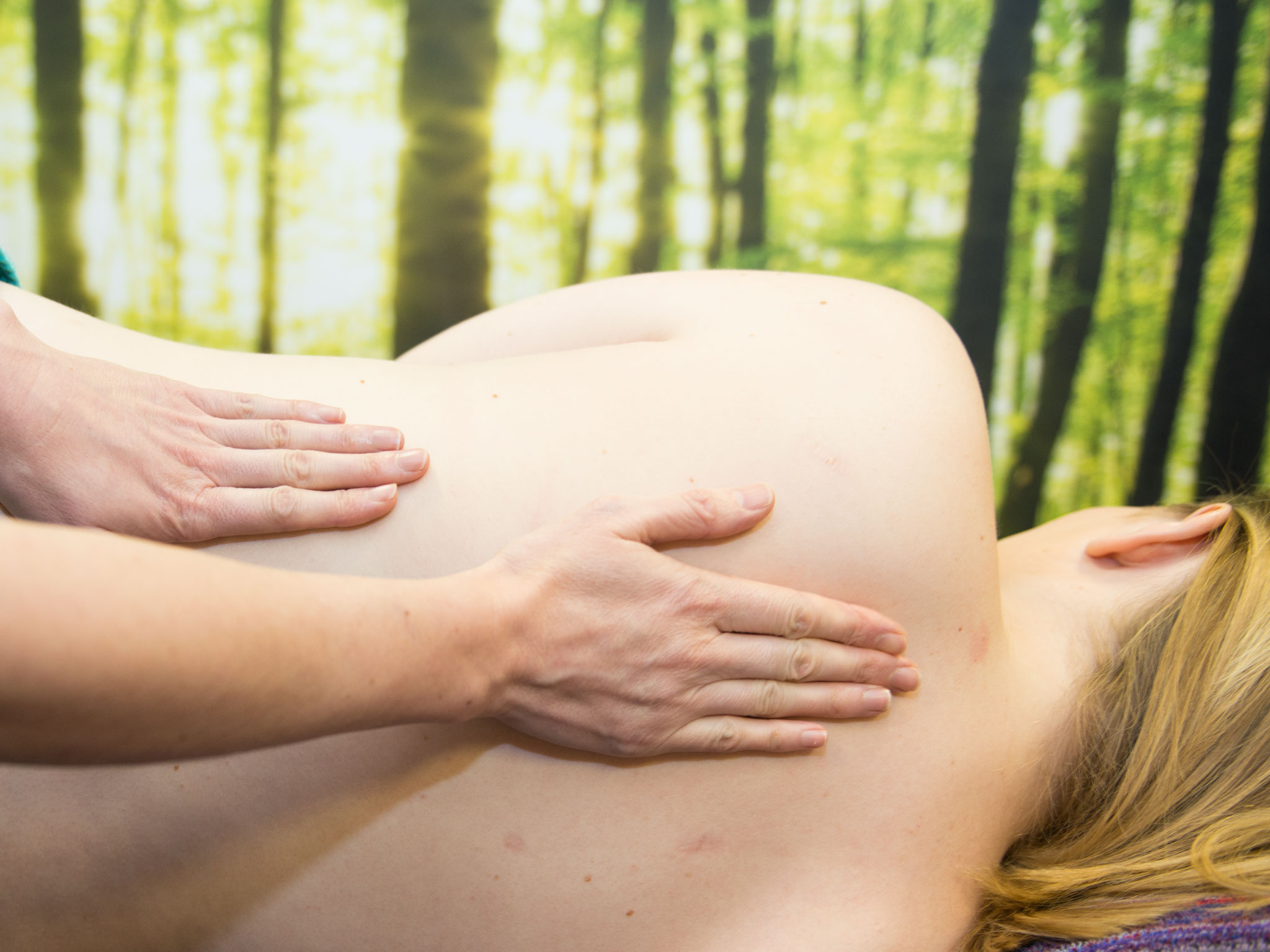
Step 2 – The Treatment
Neal’s Yard Massage oils, as well as lotions, creams and talc can be used; oil is the most commonly used medium. There are a variety of base oils available as well as Neal’s Yard essential oils which will be blended with the base oil. The choice of the essential oil will be suitable to use on Pregnant Mothers.
A good oil will nourish the skin and allow a free-flowing movement as it enables the hands to glide over the area. The oil will be applied to the area to be massaged ensuring good coverage. The therapist will begin the techniques by starting with the effleurage(stroking) technique to warm up the muscles before any pressure is applied. The therapist applies long, smooth strokes over the body, using firm but gentle pressure to improve circulation, ease muscle aches and tension, increase flexibility and encourage relaxation.
The therapist will be able to feel where the tension areas are and adapt the treatment accordingly by using various techniques to reduce the adhesions or tension knots that are present in the muscles.
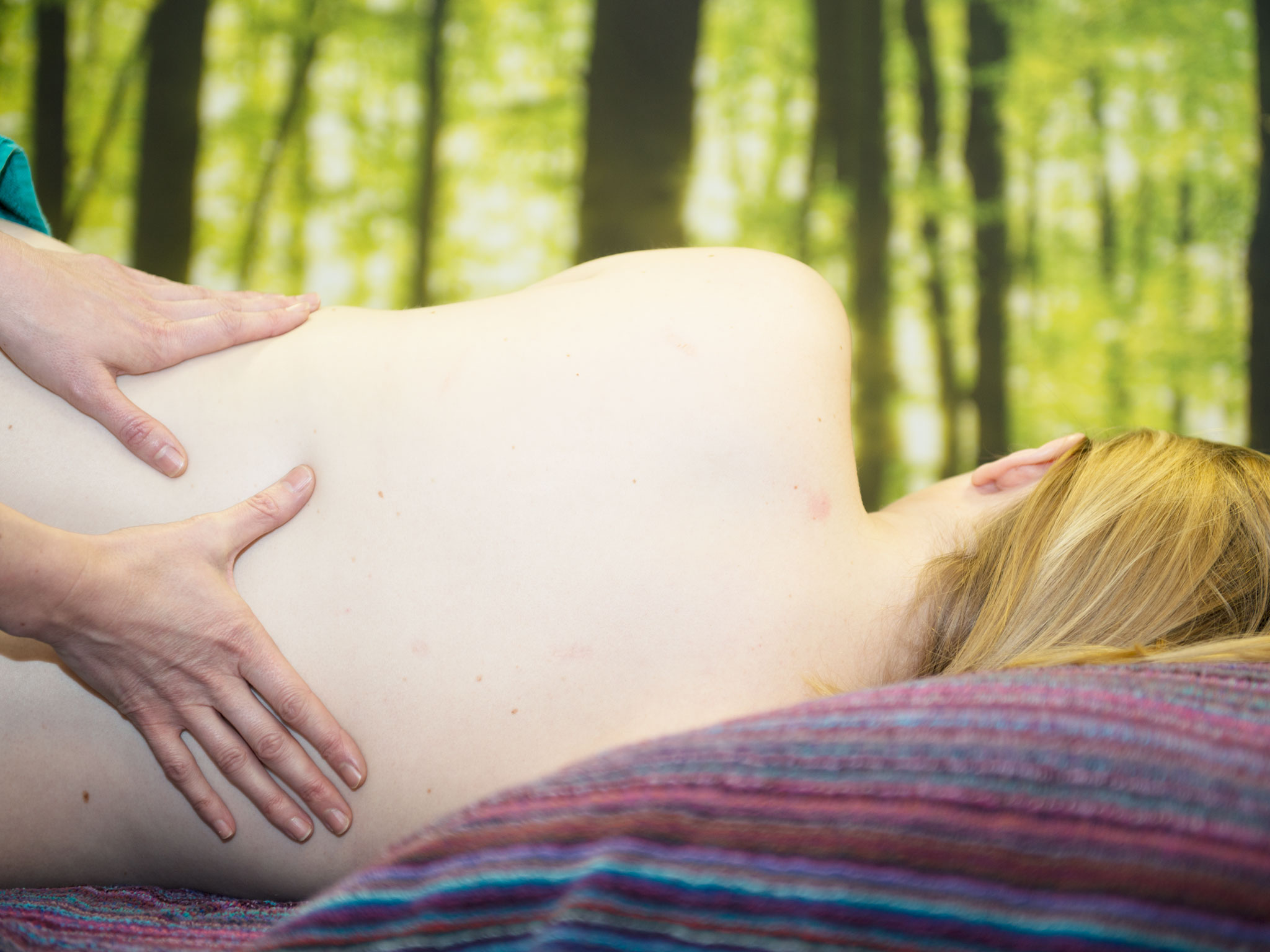
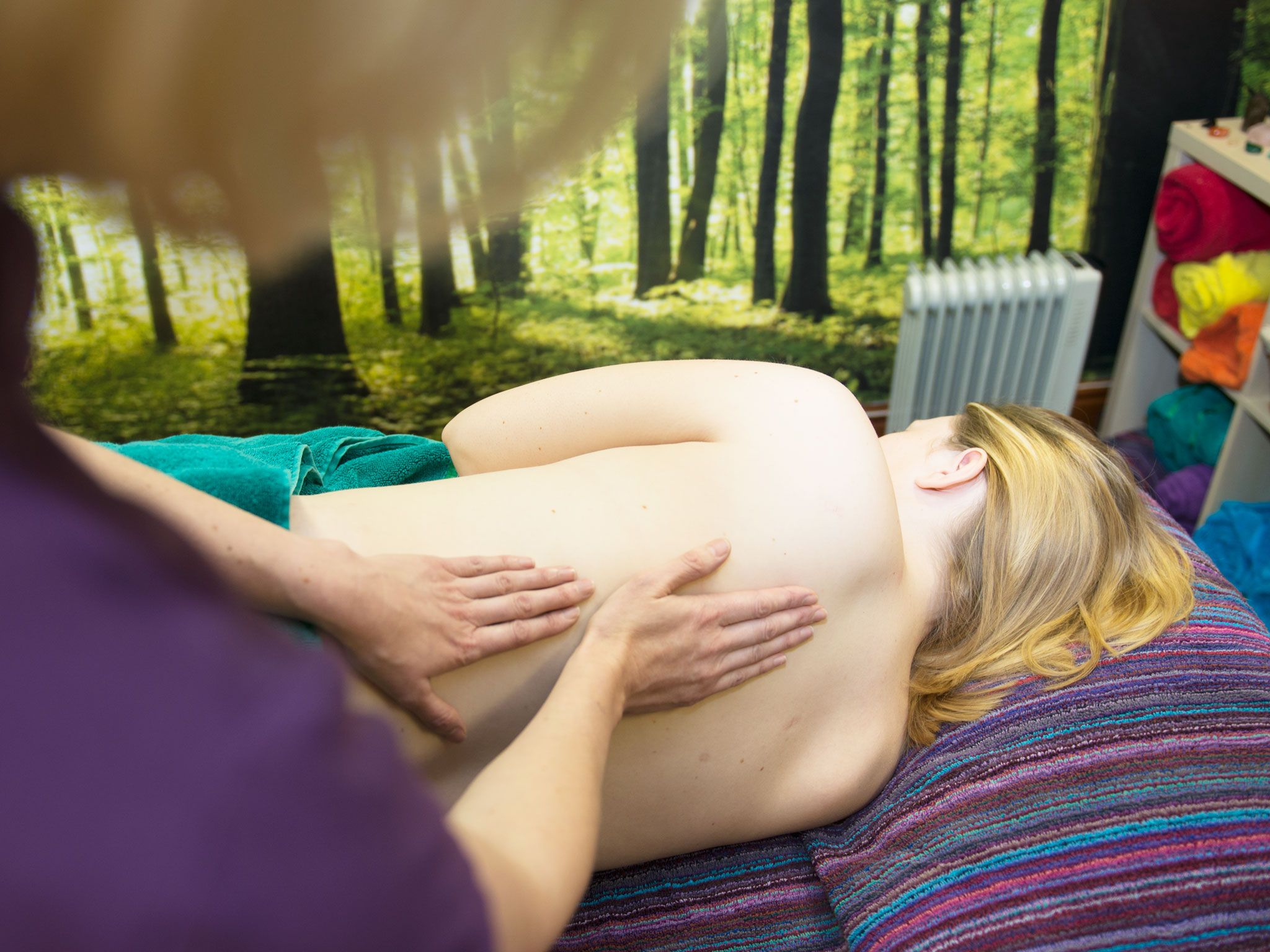
Step 3 – Finishing Up & Aftercare
The therapist will sense responses but will also ask the client about the depth of their pressure ensuring that it does not cause pain, an effective massage should not cause pain. If in discomfort or pain, the client should feel free to ask the therapist to modify their treatment.
The therapist will finish the treatment and quietly check that the client is comfortable and offer a glass of water. The client will be asked to take their time getting up and the therapist will leave the room whilst the client gets dressed. On the therapist re-entering the room the client and therapist will discuss how the treatment went and the therapist will give after-care advice.
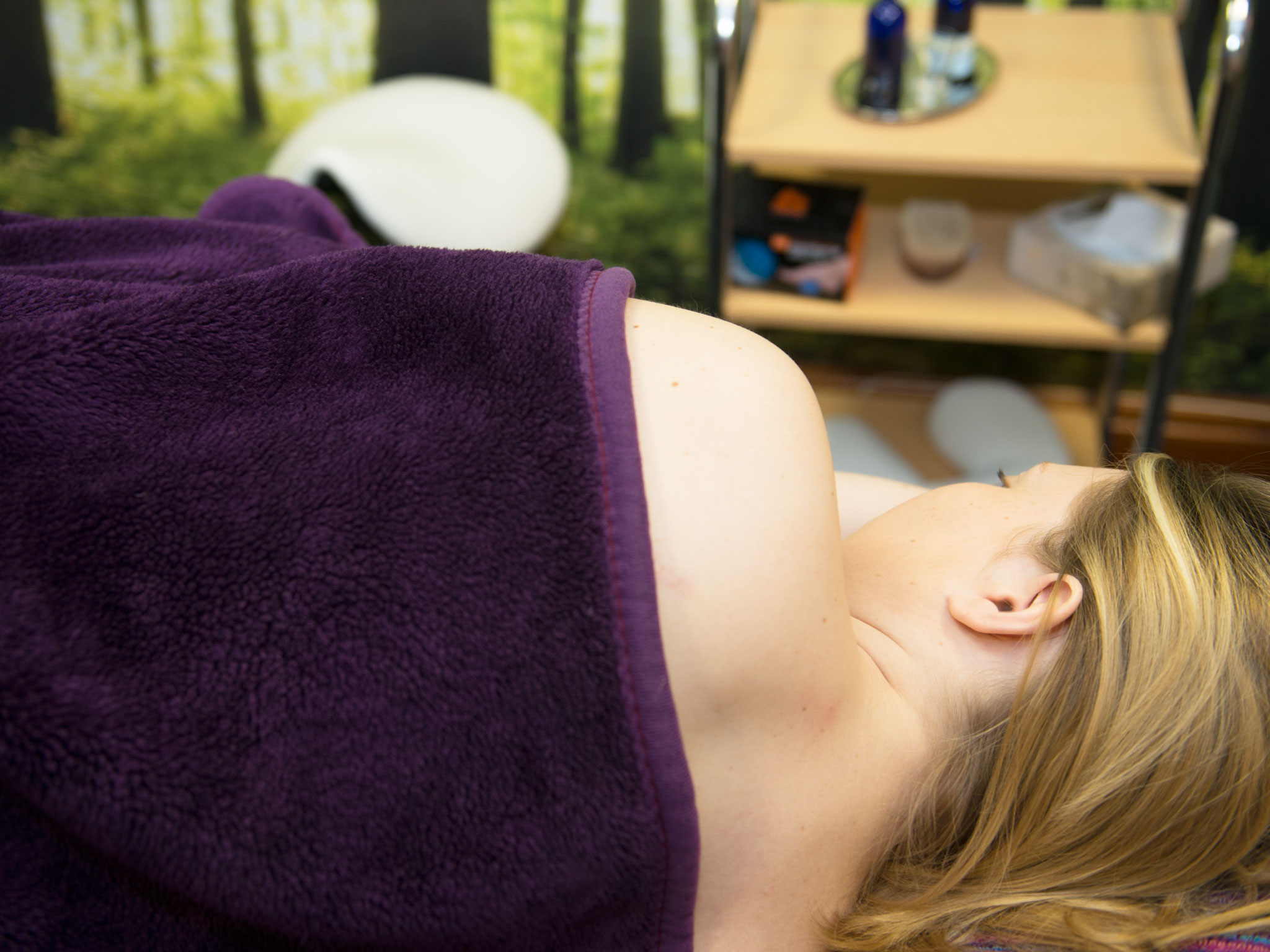
Who should get a Pregnancy Massage treatment?
Pregnant Mothers in the 2nd/3rd trimester not the 1st
Pregnant Mothers with stress and anxiety related conditions
Pregnant Mother with muscular aches and tension
Pregnant Mothers with stiffness in joints and musculoskeletal conditions
Pregnant Mothers wishing to relax<
Why should you get a Pregnancy Massage treatment?
People are very aware of the value of massage in combating the stresses and tensions of modern living. We recommend Pregnancy massage for Mother’s to be from the start of their second trimester onwards, it will help with the ailments listed below
Pregnancy massage can:
– Alleviate stress and aid relaxation
– Ease muscle tension, stiffness, reduce muscle spasm
– Improve joint flexibility
– Aids deeper and easier breathing
– Improves circulation
– Reduces blood pressure
– Strengthens immune system
– Supports rehabilitation
– Encourages peace of mind
– Relieves mental stress
– Promotes deep relaxation
– Clearing congestion in the head
There is a growing body of evidence to suggest that massage can be effective in helping to treat certain chronic conditions, such as fibromyalgia and low back pain. In guidelines produced in 2009 by the National Institute for Health and Clinical Excellence (NICE), manual therapies – including massage – are recommended for the early management of persistent, non-specific low back pain.
Frequently Asked Questions
Q: I find it uncomfortable lying on my back can I still have a Pregnancy Massage?
A: Yes, most Pregnancy massages can be done lying on the massage couch on the client’s side with pillows for additional support. However if the client would prefer not to then the other option is to sit on the massage chair and have the Pregnancy massage seated.
Q: I’m 14 weeks pregnant can I have a Pregnancy Massage?
A: Yes, Pregnancy massage is suitable for those beyond the first trimester.
Q: What oils do you use as I’m concerned a lot of oils can’t be used when you’re pregnant?
A: We use a Neal’s Yard Organic Pre blended oil especially for Mother’s to be so there are no harmful side effects.
Book Now
To book a Pregnancy Massage call 07816 485 691 or book online below:
